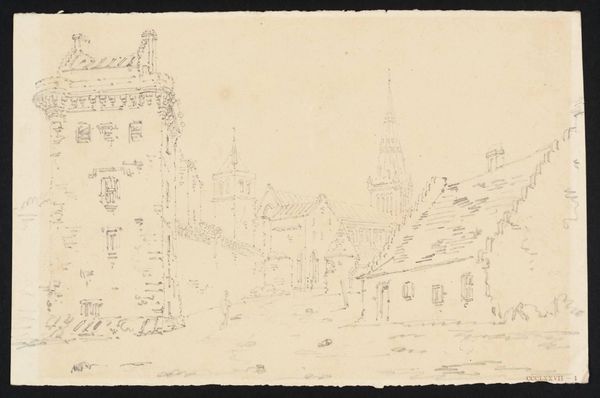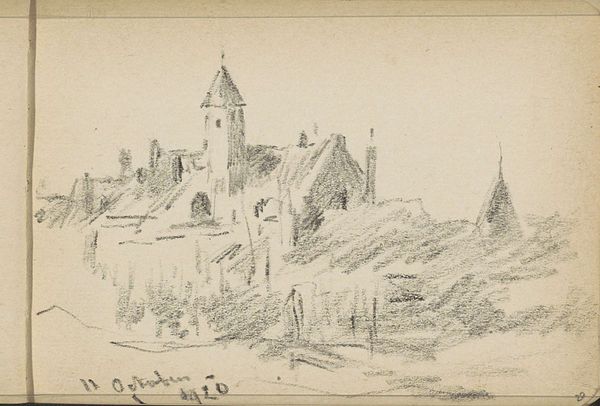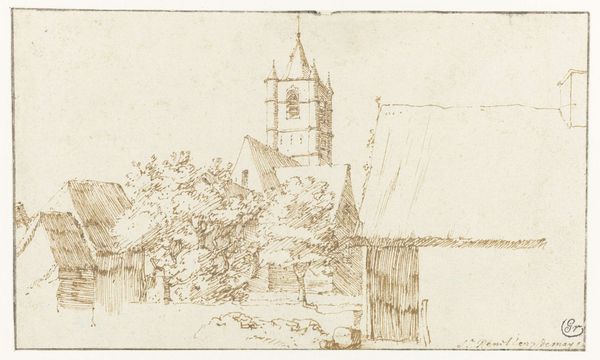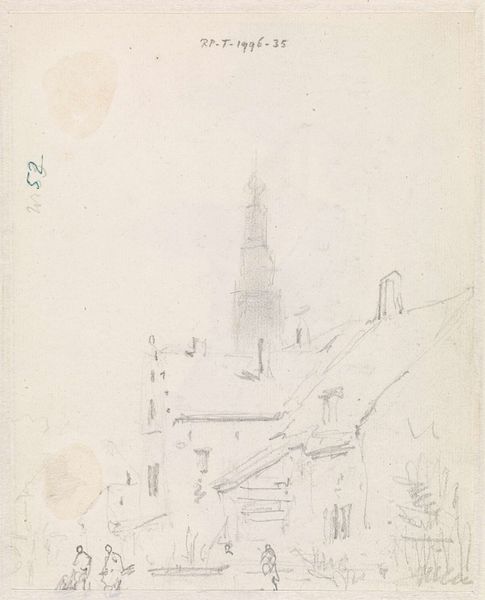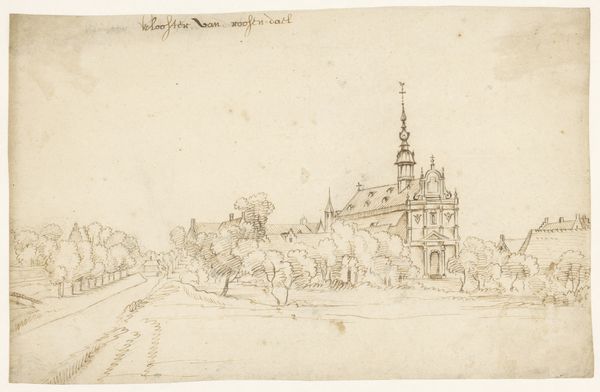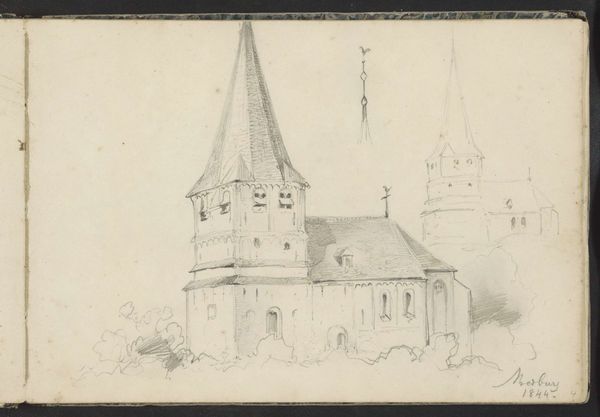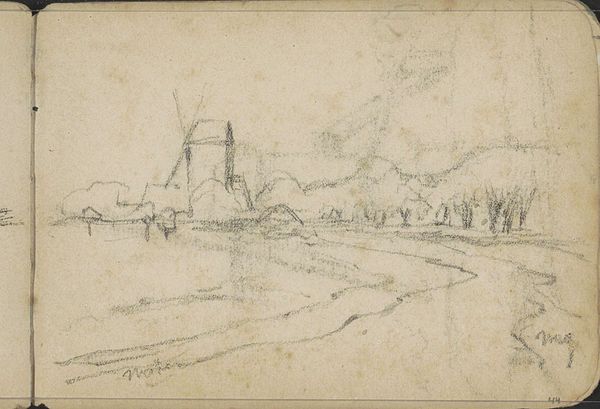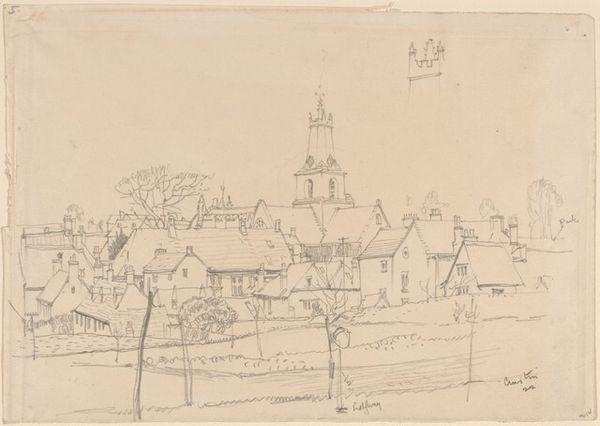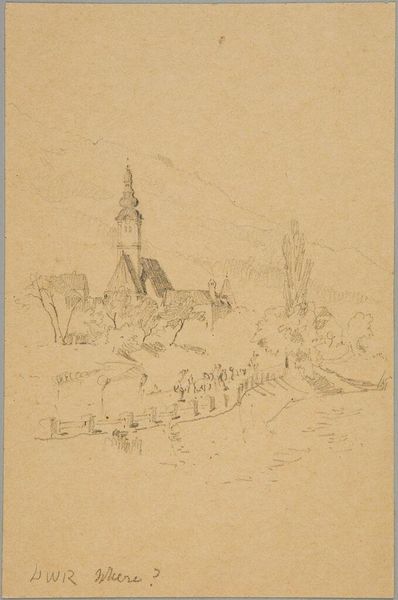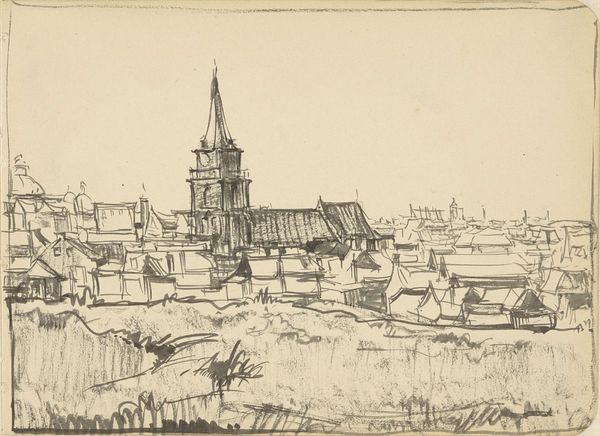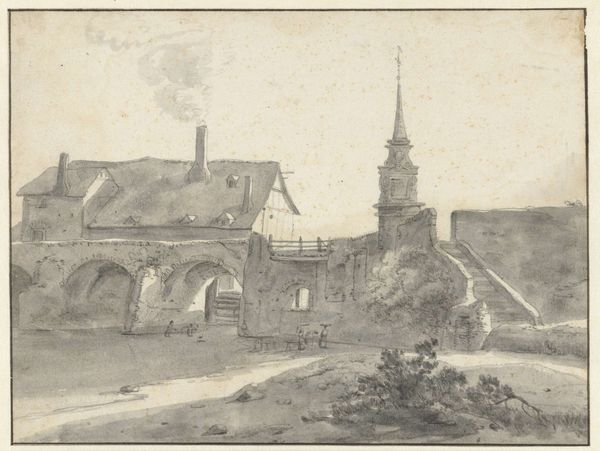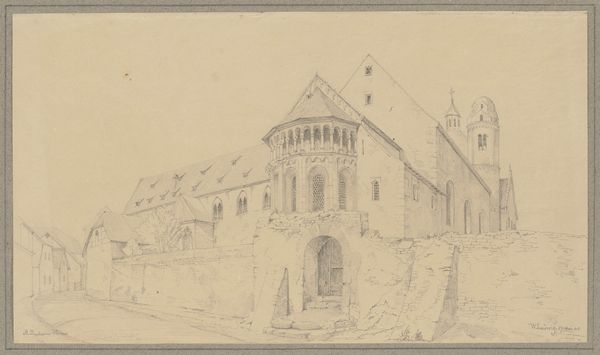
Dimensions: height 113 mm, width 159 mm
Copyright: Rijks Museum: Open Domain
Curator: This quick sketch really grabs me – it's immediate and fleeting. It seems like the artist captured this scene in a moment. Editor: Indeed. What you are looking at is Willem Cornelis Rip's "Cityscape with Church Tower," a pencil drawing on paper made between 1896 and 1897. It encapsulates a typical Dutch vista. The placement of the church immediately positions the drawing within a specific cultural context. Curator: The church spire dominates. It's a potent symbol, you know, of stability and order, jutting upwards. Yet, the sketchy, almost hesitant lines surrounding it suggests a contrasting, perhaps more chaotic or fluid reality below. It almost conveys the idea that religion provides answers in face of uncertainty. Editor: That's interesting! And I agree the sketch-like quality is key. The quick lines, the visible pencil strokes, they speak to a period of rapid urbanization in the Netherlands. Rip is not so much celebrating a timeless ideal, but recording an immediate impression of his world in flux. The city becomes impressionist! Curator: Look closer at the marks around the buildings. Those darker, more decisive strokes give form and anchor the overall composition. They also contrast and amplify the lighter lines that portray details, suggesting elements which will easily change in the future. This reinforces the impermanence implied by Impressionism, as you mentioned, but on a personal and more spiritual level. Editor: Precisely. It is about the tension between what’s monumental – the church, a symbol of the city’s institutional and spiritual core – and the ephemerality of everyday life surrounding it. What are your thoughts about the positioning of the scene in the book? The fold does add to the understanding. Curator: Seeing it here on the page is incredibly significant because it underlines its creation process as a snapshot, capturing a feeling as much as documenting architectural shapes. It reminds me that even in grand structures such as cathedrals there's humanness; a story is held on every stone and, especially, within the gaze of anyone experiencing that particular place at that moment. Editor: This really does help one understand Rip’s era better: by combining personal expression and observation of social evolution we glean key moments of how art interacts, embodies, and preserves society for us. Curator: It certainly gave me something to consider— how our perspectives both reveal the cultural memories and the socio-political narratives held within this simple sketch.
Comments
No comments
Be the first to comment and join the conversation on the ultimate creative platform.
